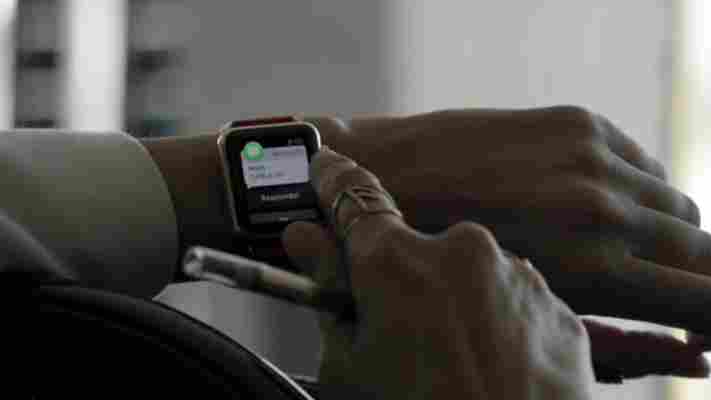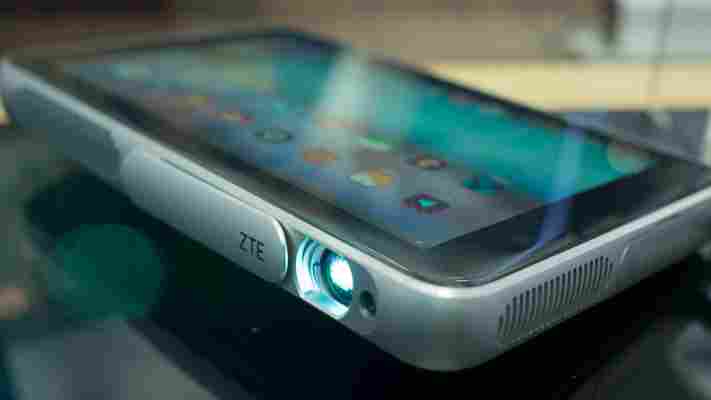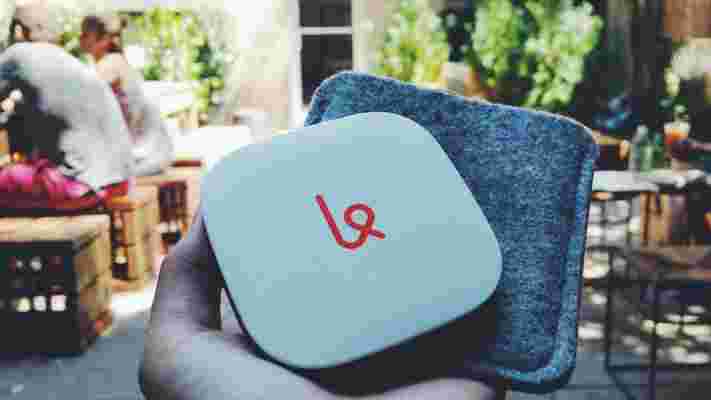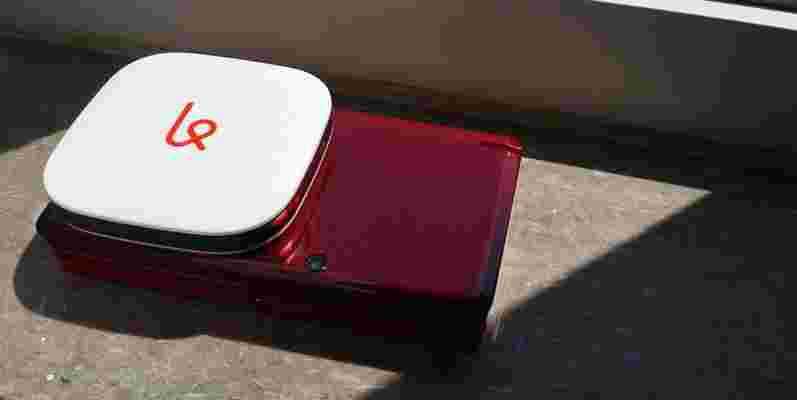It’s 13 days since Apple said it would have the Apple Watch in stores in “two weeks” and it seems that roll out is right on schedule.

As 9to5Mac first spotted , Apple’s opened its Reserve & Collect page so customers can choose the model they want online then head to an Apple Store to pick it up.
At the time of writing, the service is available in the UK and Australia, but it looks like it’ll be opening up to other countries across the day.
When you head to the page, you’ll be shown whether the model you want is available in the store you select, and the next available appointment time.
➤ Reserve & Collect [Apple via 9to5Mac ]
Read next : This DIY bracelet reminds you to move for a lot less than an Apple Watch
ZTE stuck a tablet on the back of a projector for no apparent reason
Here at Mobile World Congress in Barcelona there’s always the weird and wonderful — this year’s no different. Chinese gadget maker ZTE has a curious new device: an Android tablet attached to the back of a projector.

It’s called the Spro Plus , and on the back you’ll find an 8.4-inch AMOLED touch-screen with a 2K resolution and it has a 12100mAH battery, though it’s unclear how long that’ll last if you’re projecting.
It has some pretty loud speakers onboard (well, I could hear them over the MWC crowd at least), that might help if you’re watching a film, but it’s unlikely you’ll actually want to do that.
I couldn’t really figure out who would want or need this thing, given that attaching a tablet to operate the entire life means it’s got a much shorter shelf life than your average projector and might slow down over time.
It could be useful for if you don’t want any peripherals lying around for getting a presentation done, but given that you’ll need to get the materials on there in the first place it’s a pretty hard sell.
There’s no price or date available for the projector, so if you’re really eager on it you’ll have to wait until a vague “Summer 2016” to get your own.
➤ Spro Plus [ZTE]
Karma Go review: A Wi-Fi hotspot for the contract-free era
If today’s streaming services and telecom providers have taught us anything, it’s that this generation is done with contracts. Almost non-committal as we are with a Facebook event RSVP, we want the option to not feel tied down to a service when we opt to try them.

That concept is exactly what Karma has done for mobile hotspots with the launch of the Karma Go . This LTE-enabled puck runs on Sprint’s mobile network so you can access Wi-Fi whenever and wherever you need it.
The Karma Go began shipping last month, and works on a pay-as-you-go model. Instead of subscribing to monthly internet packs, you can buy data in various GB increments, and replete as needed. Data doesn’t expire, and you can keep track of how much you’ve eaten through with the Karma iOS or Android app, or the official website .
The Karma Go is simplistic in every facet. The device comes in a light, plastic sleeve packaging, with a felt carrying case included.
To set up, all you have to do is hold the power button until the green light comes on, and log into your account to sync the device. That’s it: You’re done.
For the most part, Karma Go starts up for me in less than a minute, but upward of 15 seconds. Not a huge deal, but somewhat of an eternity considering the lightning load times on most devices today.
There are three white dots on the side of the puck, which works as a signal strength indicator. More lit dots mean a stronger signal, and I haven’t ran into issues using it around New York City in coffee shops or parks.
Karma says the device lasts up to five hours on battery. I suspect most people will likely be using it plugged into their USB slot anyway, but that should be enough for a cameo at Starbucks while you pretend to type something important.
Karma Go is also useful when commuting. Free Wi-Fi on buses are a miss nine times out of 10, but the Go helps to keep a steady connection similar to browsing the Web on your mobile phone. The speed appears to be roughly the same as well.
Unfortunately, you can’t customize your Karma’s Wi-Fi network or make it password-protected – and that’s on purpose. Karma’s catch is that you have to share your internet.
True to its name, what that means is once your Karma Wi-Fi network is live, it is public for anyone to join. When a random person joins your network, they’ll have to sign up for a Karma account to use it. You get 100MB of data as a thank you for “referring” a new member, and the data they use is through Karma, not your data pack.
Karma tells me that up to eight people can join your connection at a time to prevent speed throttling, and if it gets that bad, you can just walk away and take the connection with you.
It’s an interesting concept growth-wise, but also a concerning one when it comes to security. I don’t want to have to feel paranoid using my own Wi-Fi network, even if Karma says data is pulled from individual accounts, not the shared network.
You can remedy this with solutions like VPN or just avoid making online purchases while on Karma’s network – but then the idea of internet wherever you need it sounds a lot less liberating.
Since I work remotely, having the Karma Go on hand is helpful for logging on the Web wherever I choose. No more searching Foursquare for cafés with free Wi-Fi or asking the cashier for the password. It gives me a sense of assurance that if I need to hop online for work or otherwise, as long as someone can reach me by phone, I’ll probably be able to get on the Web without needing to tether.
Still, I’m a bit of a cheapskate when it comes to data, so the idea of sharing my network with randoms is something that I’ll have to get used to. Ironically, I almost wish the Karma Go did come with an unlimited data plan so I can cancel my cable service and have Wi-Fi connection always on the go.


Karma says the next step is to work with local businesses to offer Wi-Fi citywide using its hardware. It’ll be competing with the likes of Google’s Sidewalk Labs and waste management company Bigbelly – but at least you won’t have to get your internet from the local trash can .
The Karma Go is available today for $149 , with an additional gigabyte of data starting at $14. Coverage is US-only for now.
Read next: Facebook’s giant internet drone is ready for testing
Editor’s Note: An earlier version of this piece says those who piggyback your device use data from your paid pack. We apologize for the error.
